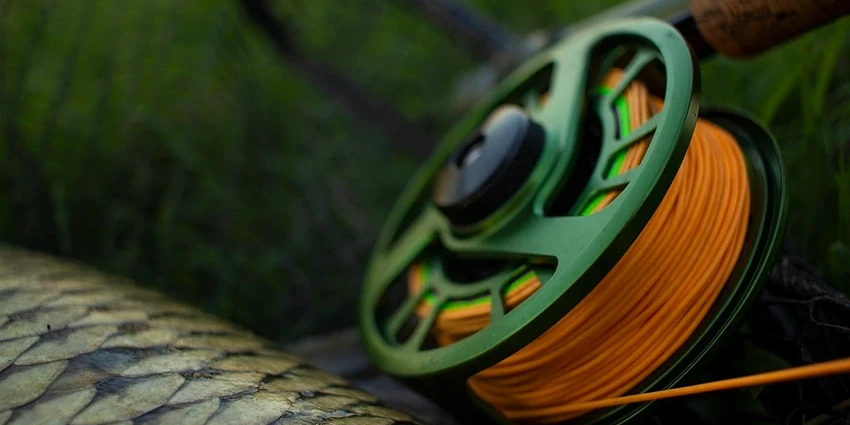All products were chosen independently by our editorial team. This review contains affiliate links and we may receive a commission for purchases made. Please read our affiliates FAQ page to find out more.
Bass fishing, an adventure blending skill and patience, is more than just a pastime; it’s a passion shared by many. Whether you’re a seasoned angler or just starting, understanding the nuances of bass fishing is key to a successful catch. Let’s dive into the world of bass fishing, exploring essential gear, understanding bass behavior, and mastering basic techniques.
Essential Gear for Bass Fishing
Bass fishing requires specific gear to maximize your chances of a successful catch. Here’s a quick rundown:
- Rods and Reels: Opt for medium-heavy rods for versatility. Baitcasting reels are preferred for their accuracy and control. For beginners looking to get started, check out our beginner’s guide to bass fishing.
- Line Types: Fluorocarbon lines are great for clear water, while braided lines are better for heavy cover.
- Bait and Lures: The choice of bait can make or break your fishing trip. Lures like crankbaits, spinnerbaits, and plastic worms are popular choices. Here’s a guide to help you select the right lure based on water temperature and clarity.
Table 1: Essential Bass Fishing Gear
| Gear Type | Description |
| Rods | Medium-heavy for versatility |
| Reels | Baitcasting for control |
| Line | Fluorocarbon for clear water, Braided for heavy cover |
| Lures | Crankbaits, Spinnerbaits, Plastic worms |

Understanding Bass Behavior
Knowing where to find bass and what they’re likely to bite is half the battle. Here’s what you need to know:
- Habitats: Bass prefer structures like logs, rocks, and vegetation.
- Seasonal Patterns: Bass behavior changes with the seasons. They move shallow in spring and fall, and deeper in summer and winter.
- Feeding Habits: Bass are opportunistic feeders, often ambushing prey.
Table 2: Bass Seasonal Behavior
| Season | Behavior |
| Spring | Move shallow for spawning |
| Summer | Deeper waters for cooler temperatures |
| Fall | Return shallow for feeding |
| Winter | Deeper waters to escape cold |
Basic Techniques for Bass Fishing
Mastering a few basic techniques can significantly improve your catch rate. Here are some to consider:
- Casting Methods: Learn to cast accurately to place your lure where the bass are.
- Retrieval Techniques: The speed and pattern of your lure’s retrieval can entice a bass to strike. Experiment with different speeds and jerking motions.
Table 3: Casting and Retrieval Techniques
| Technique | Description |
| Casting | Accurate placement near structures |
| Retrieval | Varying speeds and patterns to mimic prey |
Planning Your Bass Fishing Trip
The right planning can lead to a memorable fishing experience. Here’s what to consider:
- Location Selection: Research lakes and rivers known for bass. Look for areas with plenty of structures.
- Weather and Water Conditions: Bass behavior changes with fishing weather conditions. Overcast days can be ideal for bass fishing.
- Timing: Early morning or late afternoon are typically the best times for bass fishing.
Table 4: Planning Your Trip
| Factor | Consideration |
| Location | Lakes and rivers with structures |
| Weather | Overcast days are ideal |
| Timing | Early morning or late afternoon |
Advanced Techniques for Catching Bass
To elevate your bass fishing game, consider these advanced strategies:
- Flipping, Pitching, and Punching: These techniques are great for fishing in heavy cover. They require precision and practice but can yield impressive results.
- Using Electronics: Modern fish finders can help locate bass more efficiently, especially in deeper waters.
Table 5: Advanced Bass Fishing Techniques
| Technique | Description |
| Flipping | Short, precise casts into heavy cover |
| Pitching | Similar to flipping but with longer casts |
| Punching | Penetrating thick vegetation with heavy lures |
| Electronics | Using sonar to locate fish in deep water |
Register for our latest in-depth reviews and product round-ups from the experts
Enter your email address below to receive our twice monthly reviews emails.
By entering your details, you are agreeing to our terms and conditions and privacy policy. You can unsubscribe at any time.
Tips for Tournament Success
Participating in a bass fishing tournament requires a different set of strategies:
- Preparation: Know the water you’re fishing in. Pre-fishing can give you a significant advantage.
- Mental Toughness: Tournaments can be challenging. Stay focused and adaptable.
Table 6: Tournament Fishing Tips
| Tip | Description |
| Pre-Fishing | Familiarize yourself with the tournament waters |
| Mental Approach | Stay patient and adaptable |
Troubleshooting Common Bass Fishing Challenges
Even experienced anglers face challenges. Here’s how to tackle some common ones:
- Adverse Weather Conditions: Learn to adapt your techniques to different weather scenarios.
- Different Water Bodies: Each lake or river has its unique characteristics. Flexibility in approach is key.
Table 7: Troubleshooting Bass Fishing Challenges
| Challenge | Solution |
| Bad Weather | Adapt techniques and gear |
| New Waters | Research and adapt to local conditions |
Frequently Asked Questions
Early morning and late afternoon are generally the best times.
Absolutely. Bass are sensitive to changes in weather and barometric pressure.
Bass are most active in water temperatures between 65-80 degrees Fahrenheit.







